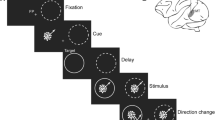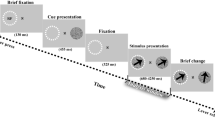Abstract
In this paper, the spatio-temporal architecture of the stimulation-modulated spontaneous low frequency oscillation (LFO) in the SD rat’s somatosensory cortex is studied by optical imaging (OI) technology. After the electrical stimulation, it is observed that the phases of the LFO signals are changed, the amplitudes are increased, and most importantly, the signals in the bilateral somatosensory cortex tend to be synchronized. Based on these phenomena, the origin of the LFO signals is discussed. It is argued that the arteriole vasomotion may be the major contribution to the LFO signals under green illumination (546±10 nm). The phase relationship among the LFO signals of arteries, veins and cortex has also been studied. It is found that there are phase differences between the LFO signal of veins and that of cortex under red illumination (605±10 nm), the signal of cortex leads that of veins by 0.6–1.0 s, while under green illumination, no obvious differences are observed and the reason may be that the mechanism of the LFO signals of cortexes and vessels are different.
Similar content being viewed by others
References
Grinvald A, Frostig R D, Lieke E, et al. Optical imaging of neuronal activity. Physiol Rev, 1988, 68: 1285–1365
Frostig R D, Lieke E E, Ts’o D, et al. Cortical functional architecture and local coupling between neuronal activity and the microcirculation revealed by in vivo high-resolution optical imaging of intrinsic signals. Proc Natl Acad Sci USA, 1990, 87: 6082–6086
Greicius M D, Srivastava G, Reiss A L, et al. Default-mode network activity distinguishes Alzheimer’s disease from healthy aging: Evidence from functional MRI. Proc Natl Acad Sci USA, 2004, 101:4637–4642
Li Y Z, Wang L Q, Wang M S. EEG-correlated fMRI of P3b component in P300 waves. Chin Sci Bull, 2005, 50(21): 2448–2456
Wise R G, Ide K, Poulin M J, et al. Resting fluctuations in arterial carbon dioxide induce significant low frequency variations in BOLD signal. NeuroImage, 2004, 21: 1652–1664
Laufs H, Krakow K, Sterzer P, et al. Electroencephalographic signatures of attentional and cognitive default modes in spontaneous brain activity fluctuations at rest. Proc Natl Acad Sci USA, 2003, 100: 11053–11058
Biswal B B, Hudetz A G. Synchronous oscillations in cerebrocortical capillary red blood cell velocity after nitric oxide synthase inhibition. Microvasc Res, 1995, 52: 1–12
Obrig H, Neufang M, Wenzel R, et al. Spontaneous low frequency oscillations of cerebral hemodynamics and metabolism in human adults. NeuroImage, 2000, 12: 623–639
Mayhew J, Askew S, Zheng Y, et al. Cerebral vasomotion: A 0.1-Hz oscillation in reflected light imaging of neural activity. NeuroImage, 1996, 4: 183–193
Elwell C E, Springett R, Hillman E, et al. Oscillations in cerebral haemodynamics, implications for functional activation studies. Adv Exp Med Biol, 1999, 471: 57–65
Mayhew J, Hu D W, Zheng Y, et al. An evaluation of linear model analysis techniques for processing images of microcirculation activity. NeuroImage, 1998, 7: 49–71
Spitzer M W, Calford M B, Clarey J C, et al. Spontaneous and stimulus-evoked intrinsic optical signals in primary auditory cortex of the cat. J Neurophysiol, 2001, 85: 1283–1298
Hu H H, Kuo T B, Wong W J, et al. Transfer function analysis of cerebral hemodynamics in patients with carotid stenosis. J Cereb Blood Flow Metab, 1999, 19: 460–465
Diehl R R, Linden D, Lucke D, et al. Phase relationship between cerebral blood flow velocity and blood pressure. Stroke, 1995, 26: 1801–1804
Biswal B B, Yetkin F Z, Haughton V M, et al. Functional connectivity in the motor cortex of resting human brain using echo-planar MRI. Magn Reson Med, 1995, 34: 537–541
Coyle S, Ward T, Markham C. Physiological noise in near-infrared spectroscopy: Implications for optical brain computer interfacing. IEEE Proc EMBS, 2004, 2: 4540–4543
Kiviniemi V. Spontaneous blood oxygen fluctuation in awake and sedated brain cortex-a BOLD fMRI study. Doctor Dissertation. Finland: University of Oulu, 2004
Fagrell B, Intaglietta M, Ostergren J. Relative hematocrit in human skin capillaries and its relation to capillary blood flow velocity. Microvasc Res, 1980, 20: 327–335
Golanov E V, Reis D J. Vasodilation evoked from medulla and cerebellum is coupled to bursts of cortical EEG activity in rats. Am J Physiol, 1995, 268: R454–R467
Golanov E V, Reis D J. Cerebral cortical neurons with activity linked to central neurogenic spontaneous and evoked elevations in cerebral blood flow. Neurosci Lett, 1996, 209: 101–104
Cooley R L, Montano N, Cogliati C, et al. Evidence for a central origin of the low-frequency oscillation in RR-interval variability. Circulation, 1998, 98: 556–561
Tomita M, Gotoh F, Sato T, et al. 4–6 cycle per minute fluctuation in cerebral blood volume of feline cortical tissue in situ. J Cereb Blood Flow Metab, 1981, 1: 443–444
Colantuoni A, Bertuglia S, Intaglietta M. Microvascular vasomotion: Origin of laser Doppler flux motion. Int J Microcirc, 1994, 14: 151–158
Liu T T, Behzadi Y, Restom K, et al. Caffeine alters the temporal dynamics of the visual BOLD response. NeuroImage, 2004, 23: 1402–1413
Zilles K, Wree A. Cortex: Areal and laminar structure. The Rat Nervous System, vol 1: Forebrain and Midbrain. Sydney: Academic Press, 1985. 375–415
Chen X, Shou T D. Accurate establishment of the retinotopic topography of area 17 in cats by intrinsic signal optical imaging. Acta Physiol Sin (in Chinese), 2003, 55: 541–546
Pouratian N, Cannestra A F, Martin N A, et al. Intraoperative optical intrinsic signal imaging: A clinical tool for functional brain mapping. Neurosurg Focus, 2002, 13: 1–9
Sato K, Nariai T, Tanaka Y, et al. Functional representation of the finger and face in the human somatosensory cortex: Intraoperative intrinsic optical imaging. NeuroImage, 2005, 25: 1292–1301
Li P C, Ni S L, Zhang L, et al. Imaging cerebral blood flow through the intact rat skull with temporal laser speckle imaging. Opt Lett, 2006, 31: 1824–1826
Li P C, Chen S B, Luo W H, et al. Correlation between in vivo intrinsic optical signals and cerebral vessel response during cortical spreading depression in rat. Prog Nat Sci (in Chinese), 2003, 13: 1320–1324
Yang Y P, Jin J Z, Zhou Y F, etc. Temporal properties of pattern adaptation of relay cells in the lateral geniculate nucleus of cats. Chin Sci Bull, 2001, 46(17): 1463–1466
Morita Y, Hardebo J E, Bouskela E. Influence of cerebrovascular sympathetic, parasympathetic and sensory nerves on autoregulation and spontaneous vasomotion. Acta Physiol Scand, 1995, 154: 121–130
Nilsson H, Aalkjaer C. Vasomotion: mechanisms and physiological importance. Mol Interv, 2003, 3: 79–89
Cox S B, Woolsey T A, Rovainen C M. Localized dynamic changes in cortical blood flow with whisker stimulation corresponds to matched vascular and neuronal architecture of rat barrels. J Cereb Blood Flow Metab, 1993, 13: 899–913
Colantuoni A, Bertuglia S, Intaglietta M. Quantitation of rhythmic diameter changes in arterial microcirculation. Am J Physiol-Heart Circ Physiol, 1984, 246: H508–H517
Author information
Authors and Affiliations
Corresponding author
Additional information
Supported by the National Basic Research Program of China (Grant No. 2003CB716104), the National Natural Science Foundation of China (Grant Nos. 30370416, 60575044 and 60675005), the National Distinguished Young Scholars Fund of China (Grant No. 60225015) and the Teaching and Research Award Program for Outstanding Young Teachers
About this article
Cite this article
Li, M., Liu, Y., Hu, D. et al. Spatio-temporal analysis of stimuli-modulated spontaneous low frequency oscillations. CHINESE SCI BULL 52, 1475–1483 (2007). https://doi.org/10.1007/s11434-007-0219-8
Received:
Accepted:
Issue Date:
DOI: https://doi.org/10.1007/s11434-007-0219-8




